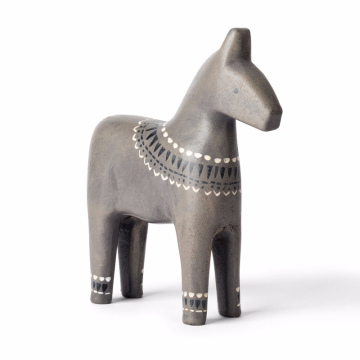Introduction to Spain's Mediterranean Climate
Spain's Mediterranean climate is a distinctive climatic zone characterized by specific weather patterns that significantly influence the diverse plant life found along its coastline. The hallmark of this climate includes hot, dry summers and mild, wet winters, conditions that create a unique environment for the flourishing of various plant species. With average summer temperatures often exceeding 30°C (86°F) and minimal rainfall, the prolonged dry season encourages resilience and adaptation among local flora. During winter, temperatures are typically milder, with increased precipitation that aids in the regeneration of plants.
The geographical features of Spain further enhance the complexity of its Mediterranean ecosystem. The coastal landscapes are dotted with rugged cliffs, sandy beaches, and diverse ecosystems, which provide varied habitats for plants. Coastal areas often experience stronger winds and salt spray, compelling certain species to develop specialized adaptations. Additionally, the presence of varying altitudes—from the sea level along the coast to the mountains that rise inland—contributes to the biodiversity of the region. The interplay between altitude and latitude combines to create numerous microclimates that support an array of flora.
This unique climatic and geographical context not only fosters the growth of typical Mediterranean plants, such as olive trees, lavender, and cork oaks, but also serves as a vital area for the conservation of endemic species. Understanding the Mediterranean climate of Spain is crucial for appreciating the resilience of its plant life and the intricate ecological relationships within this vibrant environment. This exploration of Spain's Mediterranean flora, nurtured by its climate, will provide insights into both the beauty and the importance of these plants in maintaining ecological balance in the region.
Key Flora of the Spanish Mediterranean Coast
The Spanish Mediterranean coast is characterized by a rich tapestry of plant species that have adapted to the region’s unique climatic conditions. Among the most iconic trees found here are the olive (Olea europaea) and cork oak (Quercus suber). The olive tree, with its silvery-green leaves and gnarled trunks, symbolizes peace and prosperity and is central to Spanish culture and cuisine. It thrives in well-drained soils and hot, dry summers, making it a quintessential representative of the Mediterranean landscape.
The cork oak, distinguished by its thick, rugged bark, is valued not only for its cork production but also for its contribution to biodiversity. This tree serves as a habitat for numerous fauna and plays a significant role in preventing soil erosion. Both trees exemplify resilience, having developed adaptations that allow them to survive the region's drought and fire-prone conditions.
In addition to trees, the Mediterranean coastline is rich in aromatic shrubs, such as thyme (Thymus vulgaris) and rosemary (Rosmarinus officinalis). These plants are not only essential for their culinary uses but also enhance the flora's ecological functions through their role in attracting pollinators and providing ground cover. Their dense foliage and aromatic oils have adapted to withstand arid conditions, further demonstrating the importance of such species in local ecosystems.
Furthermore, vibrant flowering plants like bougainvillea (Bougainvillea glabra) are a staple of Mediterranean gardens, known for their bracts that display a stunning range of colors. Thriving in full sun, bougainvillea is often utilized for ornamental purposes in public spaces and homes. These key flora species, each with unique physical attributes and ecological importance, contribute significantly to the cultural heritage of the region while providing essential ecosystem services.
Human Interaction with Mediterranean Flora
The Mediterranean flora found along the Spanish coast has historically played a crucial role in the lives of local populations. For centuries, the diverse plant species have been integral to various aspects of daily life, particularly in the realms of cuisine, traditional medicine, and landscaping. One of the most notable elements of this interaction is the use of aromatic herbs such as rosemary, thyme, and oregano, which are staples in Mediterranean cooking. These herbs not only enhance the flavor of dishes but are also valued for their medicinal properties, often employed in natural remedies to treat common ailments.
The cultural significance of certain plants is particularly pronounced in Spanish traditions. Olive trees, for instance, hold immense symbolic value and are deeply interwoven with local customs and festivals. The cultivation of olives for oil production is not just an agricultural activity, but a reflection of the region's heritage and identity. Additionally, other local flora, such as the Mediterranean pine, plays a vital role in traditional crafts, as its wood has been used for building and fuel throughout history.
In recent years, there has been a growing awareness of the importance of conservation efforts aimed at preserving these vital plant communities. The balance between human activity and environmental stewardship is becoming increasingly essential as urbanization and climate change threaten these ecosystems. Local initiatives and organizations work to promote sustainable practices that respect the delicate interplay between human use and ecological integrity. By educating communities about the significance of Mediterranean flora and encouraging responsible interaction, these efforts aim to ensure that these plants remain a cherished part of the Spanish coastal landscape for generations to come.
Challenges and Conservation of Mediterranean Flora
The Mediterranean flora of Spain faces a multitude of challenges, which significantly threaten its biodiversity and the health of ecosystems. Among the most pressing issues is climate change, which alters precipitation patterns and temperatures, thereby affecting the growth cycles of native plants. Higher temperatures and prolonged droughts can lead to increased water stress, making it difficult for certain species to thrive. Additionally, the frequency and intensity of wildfires have risen due to climate factors, directly impacting plant communities and their habitats.
Urban development poses another considerable threat to the Mediterranean flora. The growth of cities and infrastructure expansion often result in habitat loss, fragmentation, and degradation. This encroachment not only displaces native plants but also introduces additional pressures such as pollution and increased human activity, which can adversely affect their growth and reproduction. Furthermore, invasive species have become a major problem, with non-native plants outcompeting local flora for resources such as space, sunlight, and nutrients, ultimately leading to declines in biodiversity.
In response to these challenges, various conservation initiatives have been launched, both by governmental and non-governmental organizations. These efforts aim to protect and restore the unique plant life of Spain’s Mediterranean regions. Projects focusing on habitat restoration, the establishment of protected areas, and the promotion of sustainable land-use practices are essential for safeguarding this vital flora. Moreover, awareness campaigns encourage local communities and visitors to engage in responsible tourism and adopt sustainable practices that contribute to the conservation of these ecosystems.
By recognizing the threats facing Mediterranean flora and supporting conservation efforts, individuals can play a pivotal role in preserving the region's rich biodiversity for generations to come. Engaging in activities that promote ecological balance and participating in community-driven conservation initiatives can have far-reaching positive impacts on Spain's distinctive plant life.








